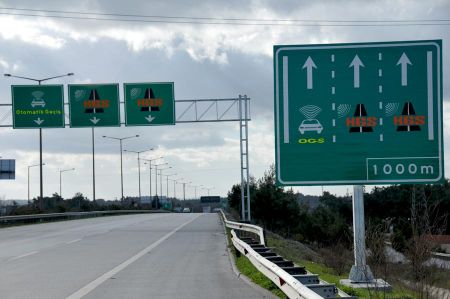The history of tolls or road user charges
- Written by Portal Editor
Just a few days ago we pointed out the changed rules for using the few Turkish motorways that have been technically modernized from the KGS system (rechargeable card) to the HGS system and have therefore initially caused problems for some motorway users.
You can of course drive onto the Autobahn at any time, even without a valid HGS vignette. Driving out is then only possible with a penalty, because the vehicle number is registered by photo and film. However, there is often a police station right at the exit, which of course registers the triggered alarm and stops "breaking through" vehicles.
But where does the road user fee come from? A modern invention?
During our tours along Roman roads, we often came across bridges on which the fortifications for guarding were still clearly visible, despite the fact that they were often largely in ruins. Here it quickly becomes clear that the guarding by soldiers not only served to protect the bridge from malicious destruction, but also to collect the fee for the passage. Of course, the construction of the necessary infrastructure cost a lot of money at the time, which was at least partially returned to the budget through user fees.
The background to the levying of tolls was therefore always the participation of the traveller, whether private or as a dealer, in the costs that were necessary to set up the predominantly national infrastructure. In other words, travellers contribute directly to the cost of creating and maintaining this infrastructure. Alternatively, the only option would be to fund these facilities from tax revenue alone, which would be unfair to those who do not travel or use roads. But do such people really exist?
Cost sharing by road users
In many European countries, drivers are asked to contribute extremely heavily to the costs of bridges, tunnels or motorways, so why not vice versa from foreigners in Germany? If you want to drive south, say for a holiday in Turkey, the vignette for Austria alone costs €8.30, plus two tunnel systems at €6.50 each. If you are then on the road for longer than 7 days, the same fee for the passage through Austria also applies on the way back. A hefty amount of €21.30 to use around 226 kilometres of motorway. The same applies to Slovenia, where the one-time drive through of around 177 kilometres also costs €15.
Toll Collect and similar systems
In Turkey, as well as in Germany and many other countries, private investors have also been increasingly involved in motorway construction in recent years. After many bad business investments, some of which led to real losses for investors, road construction has become a real alternative investment that will certainly bring good returns in the long term. The buzzword here is public-private partnership – private investments in public road construction and returns through tolls or road user fees.
Whether via Toll Collect in Germany or the HGS system in Turkey, the task of both systems remains the collection of fees for road use or collection of fees for the use of special bridges or tunnels, whether in our modern, electronic age with GPS or vignette, Prepaid card or cash like in Greece.
Please read as well:
